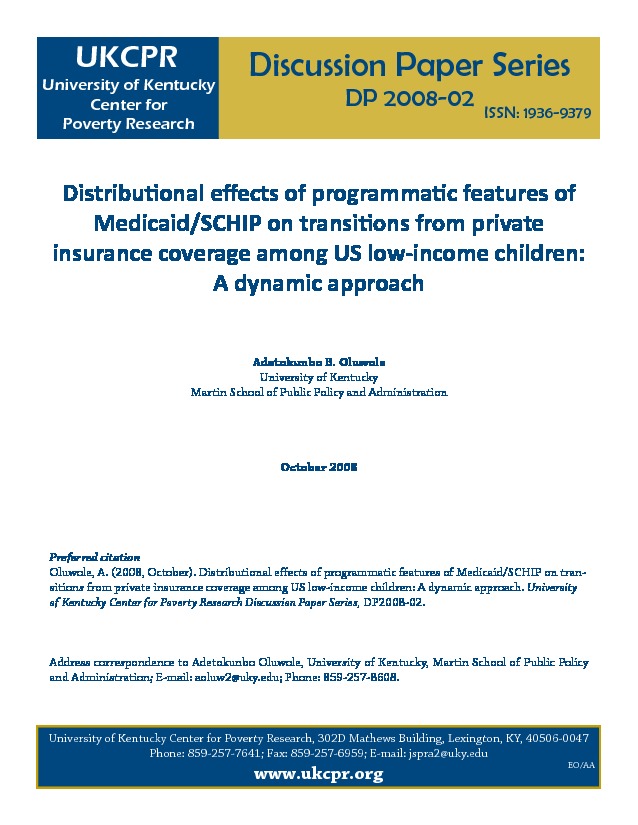The goal of this study is to evaluate the effects of Medicaid/SCHIP eligibility and programmatic features on transitions from private insurance coverage among samples of American low-income children using monthly data from the 2001 panel of the Survey of Income and Program Participation (SIPP), a nationally representative data set. The estimation approach combines multilevel modeling and event history analysis, including a robust array of variables measuring programmatic features, individual child, family, and state attributes. Logistic regression results do not indicate an adverse effect of expanded Medicaid/SCHIP eligibility on private insurance coverage. Results also suggest that states which established stand-alone SCHIP programs can potentially limit crowd-out better than states which simply expanded their existing Medicaid programs and that waiting periods of less than six months might have a negative impact on private insurance coverage. Future studies should examine, in greater detail, how program features and other social policies can reduce crowd-out, while increasing public insurance take-up rates among the neediest populations.
Research
Welfare ReformPDF Thumbnail
